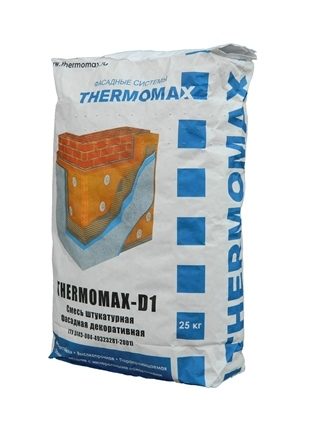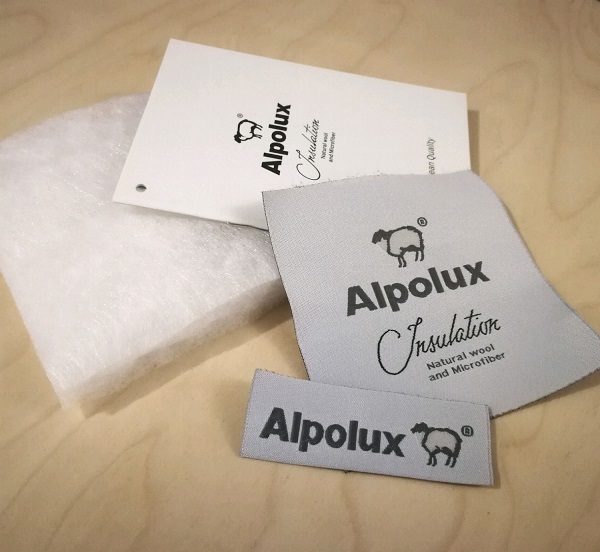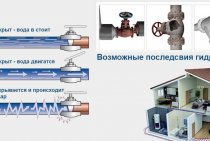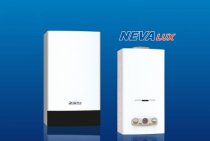Thermal insulation boards Rockwool LIGHT BATTS
Application area
Thermal insulation boards LIGHT BATTS with Flexi technology are used in almost all types of structures:
- roof structures, including attic rooms, including vertical and sloping walls and horizontal ceilings;
- walls (frame and with siding);
- pitched roofs and attics;
- partitions and ceilings (used for both heat and sound insulation);
- balconies, baths and saunas.
Technical specifications
Water Repellency: According to BS 2972-75, water absorption by volume is not more than 1.5%.
Combustibility group: mineral wool boards LIGHT BATTS is a non-combustible material in accordance with GOST 30244-94.
The melting point of the fibers is over 1000°C.
The dynamic modulus of elasticity for a plate with a thickness of 50 mm is 0.14 MPa
| Parameter | Meaning |
|---|---|
| Density, kg/m3 | 37 |
| Compressibility, % no more | 30 |
| Thermal conductivity at 10°C, W/(m.°C) no more | 0,033 |
| Thermal conductivity at 25°C, W/(m.°C) no more | 0,036 |
| Thermal conductivity under operating conditions А, W/(m.°C) no more | 0,042 |
| Thermal conductivity under operating conditions B, W/(m.°C) no more | 0,045 |
| Vapor permeability, mg/(m.h.Pa) | 0,30 |
| Slab dimensions | 1000mm (Length) x 600mm (Width) x 50-200mm (Thickness) |
Recommended Rockwool Insulation Thicknesses
| Region | Thickness for walls and floors, mm | Roof thickness, mm |
|---|---|---|
| Moscow and MO | 150 | 200 |
| Central region and Volga region | 150 | 200 |
| Northwest region, | 200 | 250 |
| Ural and Siberia Southern region | 100 | 150 |
The main advantages of Rockwool LIGHT BATTS insulation:
tight fit
The springy edge of Rockwool compresses and decompresses
1. Frame 2. Rockwool insulation LIGHT BATTS
LIGHT BUTTS slabs with Flexi technology fit tightly into the frame structure, which avoids the formation of "cold bridges" - there are no gaps between the insulation and the frame. Thanks to this, the finished structure reliably retains heat, providing a comfortable atmosphere in the room and the absence of drafts.
Release the Rockwool board and it will fit snugly into the frame
Pinch the springy edge and insert the other side
Insert one side of the Rockwool board into the frame
Simplified installation
Insulation LIGHT BATTS with Flexi technology is easy to install into the frame, thanks to the presence of a springy edge. The plate does not need to be customized into the structure. It is enough to press such an edge and the plate falls into place, in addition, compensating for possible vertical deviations. The spring edge is marked on the end.
Environmental friendliness
ROCKWOOL LIGHT BUTTS is the first thermal insulation to receive the EcoMaterial Green label. It confirms the safety of using the material in any buildings: from high-rise buildings to premises with the most stringent requirements - health and child care facilities.
Fire safety of ROCKWOOL insulation
Rockwool insulation withstands temperatures in excess of 1000°C, acts as a barrier to the spread of fire and is able to delay its spread, giving invaluable additional time to save people, save property and reduce damage to the environment.
The fire resistance of a material explains how effectively a building material restrains the spread of fire and prevents its penetration from one room to another.
ROCKWOOL insulation belongs to the group of non-combustible (NG according to GOST 30244) building materials. This allows for a certain time to delay the process of destruction of the supporting structures of buildings.
Possessing absolute fire safety, ROCKWOOL insulation materials are used in the construction of buildings of all types: from one-story cottages to high-rise buildings.
Acoustic comfort (noise isolation)
Noise isolation
In addition to insulating properties, ROCKWOOL LIGHT BUTTS insulation has good sound absorption and minimizes acoustic vibrations caused by a noise source.
Thus, ROCKWOOL products well isolate air sounds (propagating in the air), as well as percussion (resulting from impact), due to which they significantly improve the acoustic comfort of the room.
Package
The appearance of the packaging of insulation Rockwool LIGHT BATTS
Rockwool LIGHT BATTS thermal insulation boards with Flexi technology are supplied in a new informative package that tells about the distinctive features and scope of the material. Hermetic Rockwool packaging is made from a durable polyethylene film and completely covers the product from all sides, reliably protecting the heat-insulating boards from atmospheric influences during transportation and storage.
Decorative plaster THERMOMAX-D1 2 mm for facades

Properties and advantages of facade plaster THERMOMAX-D1(2 mm) (TERMOMAX-D1)
- high adhesion to substrates
- good adhesion to mineral substrates
- high vapor permeability
- high moisture resistance
- crack resistance and plasticity
- high initial and final strength
- frost and weather resistance
- possibility of tinting
What is the best insulation for a jacket in winter
In order not to fall for the hook of a seller who convinces that warm clothes are the best, you should know what fillers are for winter jackets. You also need to know their quality characteristics.
What is the warmest filling for a winter jacket on the market? Each seller will praise the insulation that is used in the tailoring of his products. Fans of natural materials will argue that there is nothing better than down or sheepskin. But the price of such goods is almost cosmic.
The developers who created synthetic fibers managed to significantly reduce the cost of insulation. Fillers from them (synthetic winterizer, sintepuh, holofiber, tinsuleyt) flocks gradually displace sheepskin and down from the market. They easily succeed due to many advantages: low cost for manufacturers, buyers, durability of warm clothes, practicality.
Manufacturers focus on the difference in heaters not only in price, but also in properties and quality. Therefore, it is difficult for users to solve the question: what is the warmest jacket filler in winter. To solve the problem, you need to carefully study the label on the product and know the characteristics of the fillers
Any of the used fillers is made of polyester fibers. A consultant should provide information about the features, production technology of a particular insulation, its advantages. Well-known world companies offer a special booklet with information about the materials used and their qualities.
To solve the problem, you need to carefully study the label on the product and know the characteristics of the fillers. Any of the used fillers is made of polyester fibers. A consultant should provide information about the features, production technology of a particular insulation, its advantages. Well-known world companies offer a special booklet with information about the materials used and their qualities.
It is difficult to unequivocally answer the question of whether your child will freeze in a particular jacket.The fillers of winter jackets perform their main function, represented by the ability to retain heat. Look for a temperature label on your clothing. It is the density of the insulation for a winter jacket that manufacturers rely on for a specific ambient temperature. Winter jackets have different allowable temperatures: from -10 to -40.
It is important to know that it is not the jacket filler that warms in winter, but the air inside its cavities. Lighter fibers have more cavities inside
Accordingly, the temperature at which this clothing option can be worn will be lower. Air is considered the best thermal insulator.
If the down jacket is natural, there is an inscription “down” on the product label. With this label, be sure that down is used as insulation. It is swan, eider, goose. When adding feathers to down, "feather" is indicated on the label.
When using wool batting, the label says "wool". The synthetic winterizer and any other synthetic material is marked as "polyester", "waltern". If “cotton” is written, then this option is not suitable for the winter, this is a jacket with a lining.
The choice of heaters is varied
It is important to remember that the air layers retain heat, and not the insulation material itself. Therefore, it is important that clothes for the winter have a top layer in the form of a membrane.
This fabric is a thin laminated film with micropores. It is waterproof, windproof and breathable.
Therefore, if you need a winter jacket for a child, you yourself decide which insulation is best in your case. For urban winter, adults and children should choose warm clothes with membrane fabric and insulation with a suitable temperature indicator.
Application of facade plaster THERMOMAX-D12 mm THERMOMAX-D1
Substrate preparation for plastering
For preliminary preparation of the base surface, it is necessary to thoroughly clean the base surface from dust and dirt, oil and grease stains, paint and lime residues, in the presence of cracks and irregularities, the surface must be leveled. If the surface is smooth concrete or highly absorbent, then we moisten it with water or, if necessary, treat it with THERMOMAX primers.
Preparation of plaster
To prepare a plaster solution for application, mix the dry mixture with ordinary water, observing the following ratio: 0.19-0.21 l per 1 kg of dry mixture, the consumption of the finished plaster is 3-4 kg / m2. Then we mix the mixed plaster mortar until a homogeneous mass is obtained, the mixed mortar can be mixed manually or using special mechanisms. After mixing the plaster mortar, it should stand for 10 minutes, and then mix it again.
Applying plaster to the base
It is necessary to apply the finished plaster to the base using a smooth metal trowel. After you have applied the plaster, you need to remove its excess with a plastic grater “on the rip”, the grater should be at an angle of 60 degrees to the surface of the base. Then the surface of the base is rubbed to the desired texture, using a smooth plastic grater. After the surface is completely plastered, it is painted with vapor-permeable facade paints.
It is important to remember: during the application of THERMOMAX-D1(2 mm) decorative plaster, do not allow the substrate surface to dry out, and, if possible, protect the facade from exposure to the sun and rain. If finishing work takes place in hot and dry weather conditions, the leveled surface with plaster must be periodically moistened with water.
It is necessary to store THERMOMAX-D1(2 mm) facade plaster in a dry room, the shelf life is 6 months.
Technical characteristics of facade plaster THERMOMAX-D1(2 mm) (TERMOMAX-D1)
|
NAME |
MEANING |
|
Color |
White |
|
Fill size |
1-2 mm |
|
Amount of water |
0.19-0.21 l per 1 kg of dry mix |
|
4.75-5.25 liters per 25 kg bag |
|
|
Working condition |
> 2 h |
|
Base temperature |
from + 5 to + 35 °С |
|
Layer thickness |
2 mm |
|
Compressive strength not less than |
> 8.0 MPa |
|
Adhesion to concrete |
> 0.45 MPa |
|
Vapor permeability |
> 0.1 mg/m.h. Pa |
|
Frost resistance |
> F 150 |
|
Consumption |
2.4 kg/m2 |
|
Package |
Paper bag 25 kg |
Which insulation is better basic requirements for thermal insulation material
First you need to decide what indicators of certain thermal insulation materials are really important and what they affect. The choice of the best heater will depend on this.
- High thermal insulation performance. We are talking about the fact that it is this indicator that protects the most from low and high temperatures at the corresponding time of the year.
- Low weight insulation. This indicator affects the further reduction in the cost of fastening, the cost of transportation, ease of operation. The lower the weight of the material, the more there is no need to strengthen the walls or foundation.
- High vapor permeability. Thanks to this indicator, excess moisture is removed from the premises, and the building structure is well dried. After all, it is a well-known fact that the greater the humidity of the structure, the lower its thermal resistance. This can be compared to wearing wet clothes. No matter how warm it is, if it is wet, it will obviously be colder in it than if it is dry. What can we say about the appearance of mold and fungus in a humid room? If the steam from the room does not come out well, and, as a rule, evaporation occurs through the walls, then you have to think about improved ventilation, which, of course, will make the project much more expensive and lead to additional heat loss.
- Possibility to choose finishes. Ideally, the thermal insulation material should lend itself to any decorative finish.
The lower the cost of using various options directly on the insulation, the better, since the application will be cheaper. What other indicators should be considered when choosing thermal insulation materials?
- Durability. Since facade insulation is not a one-year project, the service life of the insulation should be maximum.
- Environmental friendliness. First of all, the material must be safe to use for humans.
- Flammability. We are talking about the indicator of flammability, which also plays an important role.
- Price. This, of course, is an important factor, and for some it is the main one. However, if we consider the costs as a whole, then the cheap cost of the material does not always justify other costs. Not to mention the other indicators. That is, this point should just be the least important.
HEAT
Warm thermal suit
Applications
The FOSSA company presents you a unique, warming thermal suit - "HEAT".
We propose to use the “Hat” thermal suit as an accompanying winter outfit for snowmobiles, demi-season outfit for ATVs, as well as use it as a set with winter and summer suits for hiking and motorcycle equipment.
Operation in negative temperature values. Complete with waterproof equipment of the FOSSA hot-road line
Operation up to -40 °С. Complete with winter lightweight suits and overalls from the FOSSA Adrenalin line
Specifications:
- Rayon - 100% (NY)
- Hypoallergenic insulation - 150 gr.
- Lining with energy saving technology - "HEAT INSIDE"
Description of the warming thermoset - "HEAT"
The warming set consists of insulated trousers and a jacket, with reinforced quilted overlays on the knees, elbows, and the seat of the trousers. The ergonomics and anatomy of the heat-retaining kit is as close as possible to the human body. The suit is equipped with the latest technology to conserve your own body energy (warmth).
Since the line of universal sportswear "FOSSA-Element" is intended as professional equipment for extreme types of recreation, the specialists of the "FOSSA" company have thought through as much as possible, a lot of unique functional elements, starting from the specifics of the operation of the product.
- The "Hat" warming set is equipped with the innovative "HEAT INSIDE" infrared body heat preservation technology.The system of this technology is as follows: on the lining of the product, special concave micromirrors are applied, which in turn reflect the emitted thermal, infrared radiation of the body (heat), which not only heats up, but also has a beneficial effect on the human condition with the help of its own infrared radiation. Excess heat and steam pass through the distances between the mirror hemispheres and are removed outside without creating the effect of thermal overheating. Article about.
- Knitted suit adjustments will adjust the comfortable fit on any body. Namely, self-regulating knitted inserts at the waist, wrists, ankles of the thermal suit will create the necessary comfort during the active use of the warming set.
- As a heater, we used a high-tech, hypoallergenic heater, a new generation - a density of 150 g / m2.
- Protective quilted overlays will minimize the migration and stretching of the insulation used, as well as other materials used in the thermal suit.
- The complete set of the suit is designed and recommended with a line of moisture-dirt-repellent equipment "FOSSA - hot-road". In this case, a comfortable temperature mode of operation is possible in negative temperature values, with passive physical exertion.
- Complete set of the heating suit "HEAT" with the overalls "Evolution" from the line "FOSSA - adrenalin". In this case, the comfortable mode of operation, with passive physical exertion, increases to -40C.
The increased risk of operation dictates the rules and criteria for winter insulated clothing "FOSSA". Therefore, before mass production, each element is tested in real combat conditions.
Alpolux
Modern artificial insulation alpolux - what kind of material is it and what are its properties? The production technology of this filler was created in Austria. Alpolux consists of microfiber and natural wool. The wool content is between 15 and 30%.
Advantages
The main advantages of Alpolux:
- high heat-shielding properties
- ease
- retains its shape, does not deform when worn and washed
- environmental friendliness
- does not cause allergies
Air passes freely through this filler, so you will not be too hot in such a down jacket or jacket. Alpolux is often used to create children's winter clothes, including discharge envelopes for newborns. However, in the production of adult outerwear, the filler is also used.
Temperature regime
What temperature and weather is the Alpolux insulation designed for? Down jackets with such insulation can be worn up to minus 35 C - it all depends on the density of the filler. Here are comparative indicators of the density of Alpolux and the ambient temperature at which it can be worn:
- Alpolux 100 gr - up to minus 10 degrees
- Alpolux 150 gr - up to minus 15 degrees,
- Alpolux 200 gr - up to minus 25 degrees,
- Alpolux 300 gr - up to minus 35 degrees.
This insulation is able to withstand extreme frosts - for example, it is used in the manufacture of outerwear for climbers. Well, in our list of modern synthetic insulation, Alpolux is present because it contains most of the content of artificial fibers - 70%, and only 30% - wool.
Care
Jackets, raincoats, down jackets and other products with Alpolux filler can be washed in a washing machine on a delicate cycle. It is best to dry it away from heating appliances and in an upright position - for example, on a clothes hanger.
Published: 15.09.2018
See also:
The most fashionable autumn-winter jewelry (52 photos) 5 fashionable things that should be in the wardrobe this fall (33 photos) Emporio Armani fashion collection fall-winter 2018-2019 review 2018-2019 Quilted bag - what to wear? How to choose beads made of natural stones How to wear a red skirt - 30 photo ideas for a stylish look The most necessary accessories for an autumn wardrobe (49 photos) Coat and dress - a fashionable autumn set Down jacket size - how to choose the right one Red bag - fashionable sets for autumn
Category: Fashion



